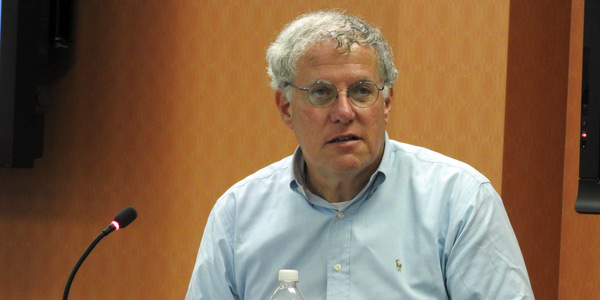By Rory D. Sweeney
VALLEY FORGE, Pa. — As PJM begins to define its overarching principles for assessing cost-containment guarantees in competitive bids for developing transmission projects, one is destined to remain contentious.
“A cost-cap commitment is only one factor considered by PJM in its overall review and evaluation of project proposals for selection in the [Regional Transmission Expansion Plan],” the RTO has said.
Some merchant transmission developers, such as LS Power, are pushing to have those commitments become a defining factor, while PJM transmission owners, such as ITC Holdings and Public Service Electric and Gas, have argued that other aspects should be given just as much weight. State and consumer representatives have also expressed support for giving increased weight to cost caps. (See Containment Policy: PJM Takes Up Cost Caps.)
Beyond being one of many factors considered in a project proposal, cost-cap provisions would be voluntary and limited to project construction costs. PJM’s Craig Glazer outlined the RTO’s other proposed principles last week at a special session of the Planning Committee on the topic. They include:
- Clearly articulating the cost-cap commitment in the proposal submission, along with what is covered and any exclusions;
- Providing proposed contractual language on covered and excluded items;
- Ensuring that all cost-cap terms and conditions will be made public, while any information and part of the proposal inappropriately labeled as confidential will not be considered;
- Supporting the rationale for any exclusions, with PJM evaluating the risk and potential cost impact of excluded events;
- Providing quarterly progress updates, with cost-cap enforcement through FERC’s ratemaking process; and
- Reserving for PJM’s Board of Managers the right to reconsider projects that aren’t making required progress and reassign completion to another developer.
“If the cost cap gets exceeded, I don’t want [PJM] to be the only entity that sues to enforce the DEA [designated entity agreement],” Glazer said. “The cost cap portion of the DEA … is really an agreement with FERC, an agreement with the ratepayers: Here’s what the project is going to cost.”
He explained that the legal process would likely require action from the developer to address the overages.
“The shoe would be on the developer’s foot to try to recover those costs,” he said. “PJM would provide an opinion on that subject, but we’re not central to that case. You’re not suing PJM for having violated the DEA.”
LS Power’s Sharon Segner said PJM was missing as an overarching principle that meaningful cost caps are preferable to cost estimates. When RTO staff hesitated to agree to that, she argued that additional clarity is needed in how proposals are being evaluated.
“If you go back to the original language in Order 1000 … there was specific instruction to the regions to disclose how proposals will be evaluated,” Segner said. “I think it’s reasonable to the development community for PJM to give general guidance on how it uses cost estimates versus cost caps in the evaluation process, and I think that is consistent with the mandate of Order 1000.”
“To simply make a bland statement that we value cost caps — and we do — it has no value,” PJM’s Steve Herling said. “The problem is the cost cap has 100 different parts, and depending upon how you structure those parts, you have a cost cap that’s valuable or a cost cap that’s completely meaningless. So for us to make a general statement that we value cost caps, it’s motherhood and apple pie, but it doesn’t actually tell you anything.”
“All I’ve heard so far was ‘meaningful cost caps’ or ‘valuable.’ … Propose [legal] language because we’re kind of at a loss as to what would be good here,” Glazer said.
“We’re comfortable with the fact that you’re considering cost caps,” ITC’s Brenda Prokop said. “We’re not comfortable with it being always the most important factor. We don’t think that’s appropriate.”
PSE&G’s Alex Stern agreed with that.
John Farber of the Delaware Public Service Commission urged patience in making any definitive decisions on the issue.
“Cost caps are a recent phenomenon, and it’s way too early in my opinion for PJM to be forced to make definitive statement as to the role cost-cap proposals would have in its evaluation,” Farber said. “I tend to agree with Sharon that legally binding cost caps could be superior to just cost estimates or desktop worksheets — but that doesn’t mean that they would be. I think PJM needs to gain experience with cost-cap proposals to understand how different terms have different effects.”
Glazer explained that part of PJM’s hesitation is how a proposal with a cost cap should be considered if it is substantially higher than a credible proposal with just a cost estimate. He described the cost cap in that situation as a “fig leaf” designed to attract positive consideration.
But Greg Poulos, the executive director of the Consumer Advocates of the PJM States, argued that giving caps deference doesn’t mean they have to be determinative in every situation. “I think there’s a big difference between the two,” he said.
The group has its next meeting scheduled for Sept. 8.





